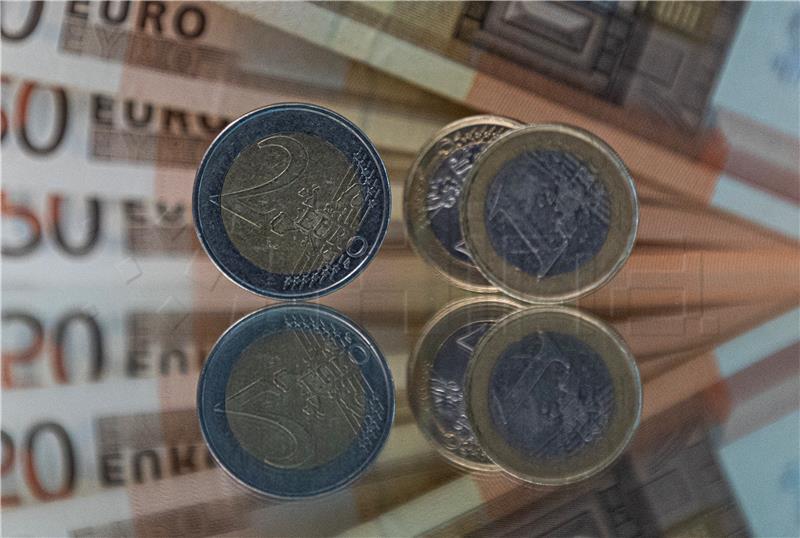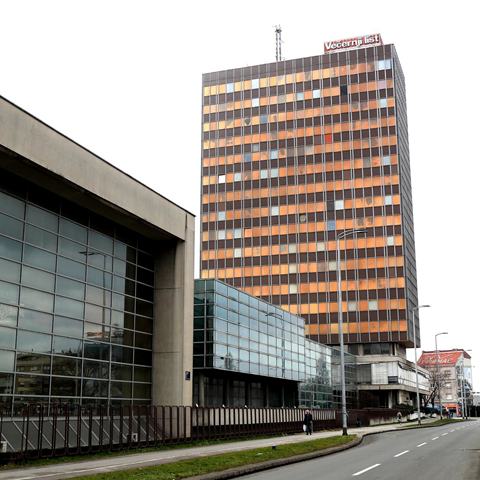In its golden era, the Vjesnik complex stood as the epicentre of Yugoslav journalism — a buzzing media hive where the most influential newspapers and magazines were produced every single day.
Standing 67 metres tall, the Vjesnik Tower at Slavonska Avenue 4 was for decades an unmistakable visual landmark and a symbol of Zagreb’s modernist optimism. Designed by architect Antun Ulrich following a 1957 competition, the reinforced-concrete and glass giant was built over nine years, from 1963 to 1972, when it finally welcomed its first tenants. Inspired by American business architecture — particularly New York’s Lever House — it ranked among the most modern buildings in Europe at the time of completion.
Its distinctive façade of brown- and orange-tinted reflective glass earned it the nickname “The Chocolate Tower”, while its structural layout introduced then-revolutionary open-space floors, perfectly suited for the hectic rhythm of newsroom life.
In its prime, the Vjesnik complex became the beating heart of Yugoslav press — a powerful production hub that launched some of the region’s most influential print editions. It was not only home to the daily Vjesnik, from which the tower took its name, but also to Večernji list, Sportske novosti and a line of iconic magazines, including Studio, Start, Arena, Svijet and Vikend. Generations grew up reading comics such as Alan Ford, printed at the complex as well.
The interior boasted state-of-the-art technology for its time: pneumatic mail tunnels transporting documents between floors, and a forest of antennas on the roof connecting editors with global news agencies. It was a city of its own — a symbol of progress, technological ambition and informational power.
The Slow Collapse
The political shift of the 1990s and the beginning of economic transition triggered a slow, irreversible decline of the Vjesnik empire. Privatisation and turbulent changes within the media market gradually extinguished its former glory. One newsroom after another left the building: Europapress Holding (now Hanza Media) moved out in 2003, Večernji list relocated to Buzin, and the final issue of Vjesnik was printed on 20 April 2012.
The final blow arrived in 2022 with the shutdown of the printing plant, turning the 30,000-square-metre complex into a ghost tower — abandoned, silent and decaying.
In the years that followed, the skyscraper became a symbol of everything that had gone wrong — failed privatisation, the demise of print media and the inability of both the state and private shareholders to utilise its enormous potential. The state eventually became the majority owner with 61%, while private companies such as Allegheny Financial and Konzum Plus held the remaining shares. Endless legal and property disputes halted any serious renovation plans, with unresolved condominium paperwork standing as the main obstacle.
The only sign of life came from the 15th floor, where Radio Laganini FM continued broadcasting — the final media lighthouse inside a deserted concrete giant.
A Glimpse of Hope — Then Flames
Things seemed to take a positive turn when the state finally adopted a more active role, relocating the Reconstruction Fund into part of the complex and completing the long-delayed condominium process. This reopened the possibility of revitalisation. Unofficially, plans existed to transform the Chocolate Tower into a modern business centre, and real estate experts such as Boro Vujović praised its “fantastic potential” and prime location. Hope for a rebirth was revived.
But destiny had other plans.
Late on 17 November 2025, shortly before midnight, a catastrophic fire broke out inside the building. The flames reportedly started on the 15th floor and spread vertically all the way to the roof, turning the skyscraper into an inferno. Despite the efforts of a large number of firefighters, the interior was completely gutted, leaving behind only a charred shell — a tragic monument to a glorious past, and a future written in ash.
Source: Vecernji.hr



